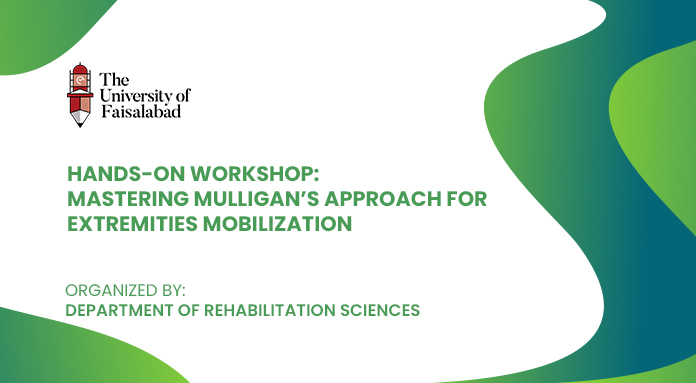Hands-on Workshop: Mastering the Mulligan Approach for Extremities Mobilization
Bridging Theory and Practice in Manual Therapy
In a dedicated initiative, the Department of Rehabilitation Sciences organised a hands-on workshop titled Mastering the Mulligan Approach for Extremities Mobilization. The session brought together emerging therapists and faculty members to engage deeply with the techniques pioneered by Brian Mulligan — emphasizing mobilization with movement (MWM) and pain-free joint mobilization for extremities. The objective was to move beyond traditional classroom lectures into real-world, tactile experience, enhancing both skill and confidence.
Immersive Learning for Extremities Mobilization
Exploring the Mulligan Principles
During the workshop, participants explored the foundational theory of the Mulligan Concept: how joint “positional faults”, accessory glides, and patient-movement guided mobilizations can lead to rapid improvement in function and reduction of pain. They practiced techniques on upper limbs, lower limbs, and joints, guided by expert instructors, and were encouraged to troubleshoot by identifying which mobilization grade or glide direction produced immediate improvement.
Practical Sessions and Peer Feedback
Hands-on labs formed the core of the workshop. Participants worked in pairs, alternating roles between clinician and client, and used immediate feedback to refine their technique. Emphasis was placed on achieving the “PILL” response (Pain free, Instant result, Long Lasting) of the Mulligan technique. The atmosphere encouraged experimentation under supervision, reinforcing the idea that manual skills and clinical reasoning go hand in hand.
Linking to Broader Educational Goals
This workshop is an exemplary step toward the objective of Quality Education. By offering advanced, applied training opportunities like this, the institution ensures that learners not only acquire theoretical knowledge but also the practical competence and confidence needed for professional practice. Furthermore, such initiatives promote lifelong learning, reflective practice and the development of specialised manual therapy skills.
Why It Matters
Enhancing Clinical Competence
With musculoskeletal issues on the rise globally, therapists equipped with evidence-based, hands-on techniques are better placed to deliver effective care. This workshop enriched participants with modern mobilization strategies, improving their readiness for real-world practice.
Cultivating a Culture of Excellence
Providing immersive workshops reflects a commitment to high-quality education and professional development. It signals the value placed on active learning, mentorship, and ongoing refinement of clinical skills.
Contributing to Better Patient Outcomes
When therapists are trained in techniques that yield instant and lasting improvements, patient satisfaction and functional outcomes both benefit. The ripple effects of training sessions like this extend into clinical workflows, service quality, and patient trust.
Conclusion
The hands-on workshop on the Mulligan Approach for Extremities Mobilization marked a significant milestone in manual therapy education. It combined rigorous theory, expert instruction, and tangible practice—ensuring that participants are not only knowledgeable but also capable. In doing so, it sets a strong example of how high-quality training can bridge the gap between academia and practice, shaping better therapists and better care.

